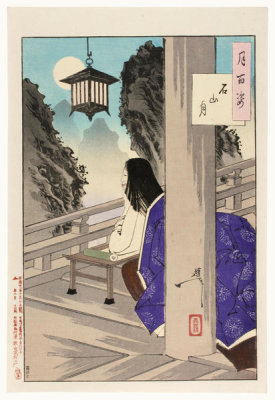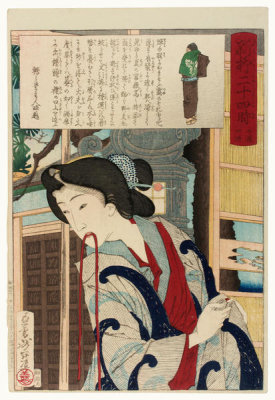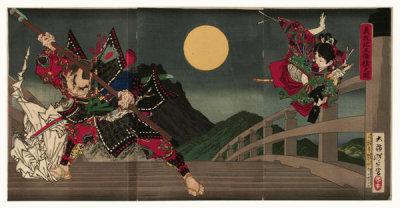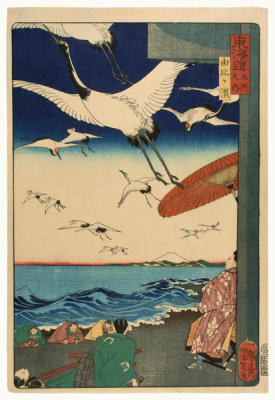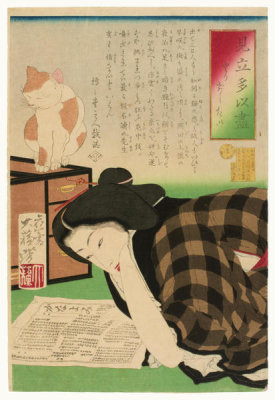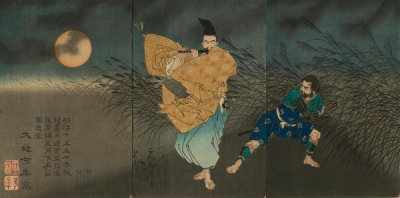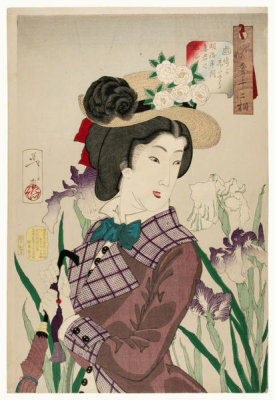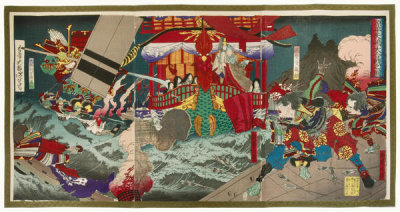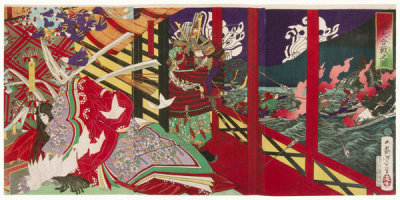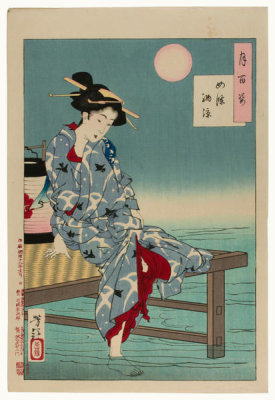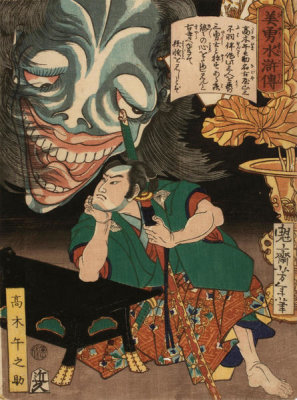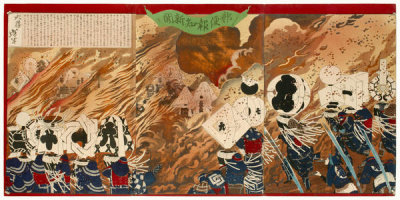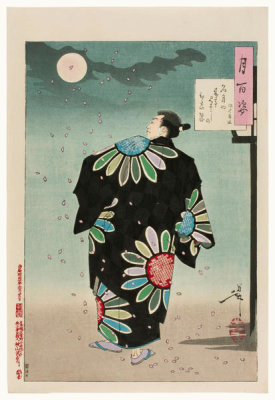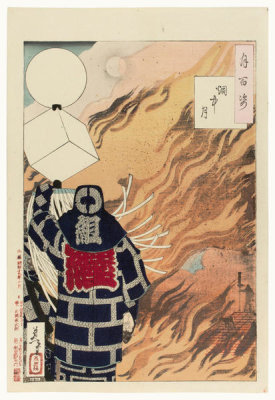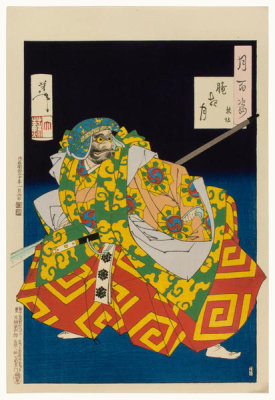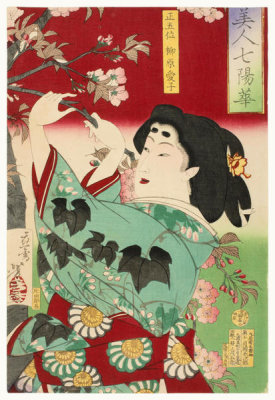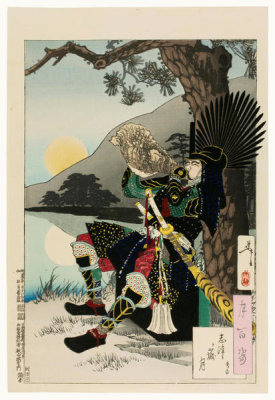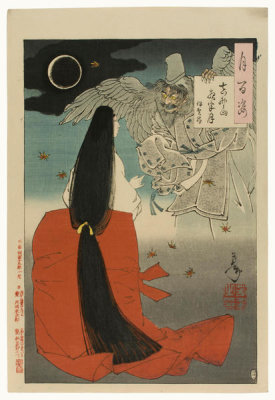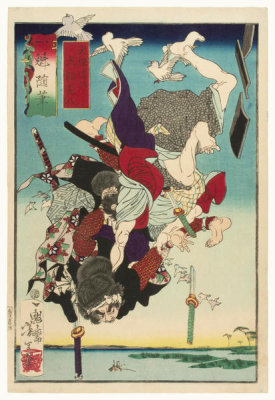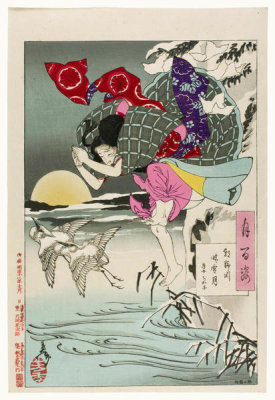Tsukioka Yoshitoshi
Born in Tokyo (formerly Edo) in 1839, Yoshitoshi (Japanese, 1839–1892) is recognized as the last great master of the ukiyo-e (yoo-kee-oh-ey) tradition of Japanese woodcut printing. His life and career spanned a period of time that witnessed many important cultural and political shifts in Japan. He grew up and trained as an artist in the final years of the Tokugawa Shogunate, which existed between 1600 and 1868. During this period, Japan was organized in a feudal system of government in which the military ruled over the country while the emperor remained a figurehead with very little power. Japan was almost completely isolated from other nations, both near and far, for most of the Shogunate. Big changes came in 1868 with the Meiji Restoration, when power was returned to the emperor and Japan’s borders were opened up to the rest of the world. Yoshitoshi’s art reflects these major cultural changes.
It was in the final years of the Tokugawa Shogunate that Yoshitoshi became well known for his prints that feature scenes of great violence. Though he wasn’t the first artist to depict this subject matter, Yoshitoshi’s artworks became especially known for the expressiveness of his figures and the special mixtures of red ink he used for blood that heightened the gore. These works were extremely popular at a time when the people of Japan were witnessing the conflicts between the forces backing the Shogunate and the military that supported the restoration of the emperor’s power.
As Japan opened up its borders and modernized, traditional Japanese woodcut printing faced competition from modern technologies like photography and lithography. Yoshitoshi skillfully navigated between an adherence to traditional printmaking and experimentation with new materials, techniques, and subject matter. To that end, he took advantage of brighter, more intense ink colors newly imported from the West. The bright colors complemented the energetic quality of his lines and expressiveness of his figures, invigorating the ukiyo-e tradition for this new modern era. This tension between tradition and innovation is one thing that makes Yoshitoshi’s work so unique and admired.

